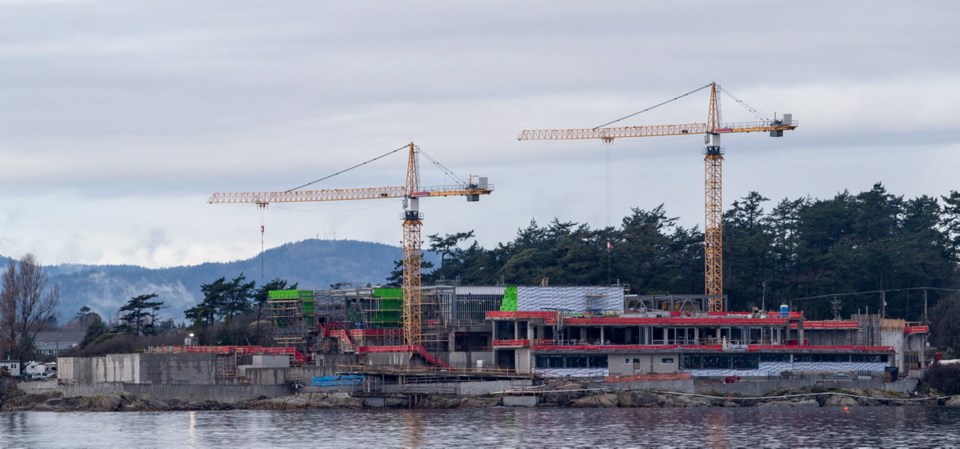The Capital Regional District is considering easing a prohibition on spreading sewage biosolids on land, so some of the material can be used at the Hartland Landfill to fertilize trees and reduce greenhouse-gas emissions.
Most of the dried biosolids that will be generated by the region’s new $775-million sewage-treatment system will be shipped away for use as fuel for cement kilns at a plant in Richmond.
But the district needs to find another use for the granular material during the four to five weeks each year when the kilns shut down, Larisa Hutcheson, general manager of parks and environmental services, said in an interview.
“We had originally planned to just landfill the dried biosolids during that time, but the province has requested that we come back with a beneficial use for the biosolids during that planned down time,” she said.
The CRD banned spreading biosolids on land in 2011 over concerns about contaminating farmland and food production.
But a report going to the district’s environmental services committee on Wednesday recommends that the board partially rescind that ban so that biosolids can be used on land at Hartland.
First, dried biosolids could be mixed with organic material and used as temporary cover on active parts of the landfill.
Methane gas escaping from the landfill will pass through the biosolids and get converted to carbon dioxide, the report says.
“Through this transformation, [greenhouse gas] emissions are significantly reduced, since carbon dioxide is a much less potent GHG than methane.”
The biosolids could also be used to fertilize trees and other vegetation covering inactive sections of the landfill, the report says.
“Current vegetation at the landfill is suffering from limited nutrients in the final top cover,” the report says.
“Dry biosolids have a long history of use as a nutrient additive in planted areas and would improve vegetative growth within the landfill footprint.”
Hutcheson stressed that the policy change, if approved, would allow the land application of biosolids only at the landfill and nowhere else. “I know that there has been controversy in the past around land application of biosolids,” she said. “We don’t have options at this point. We have exhausted all of our options for alternative fuels. When we looked at the cement kilns, it was really our only option.
“And we have to have a plan [into the province] by the end of April. So in terms of looking at something really new and innovative, that’s really going to be in our long-term plan.”
Environment Minister George Heyman has rejected simply dumping the biosolids in the landfill. In a letter to the CRD board last year, Heyman approved the district’s biosolids strategy on condition that officials find a beneficial use for the biosolids during the cement plant shut-downs.
“The CRD’s policy banning the land application of biosolids unnecessarily limits the options available for beneficial use,” he wrote.
He added that land application of biosolids, if done in according to regulation, is more sustainable than applying chemical fertilizers and has the potential to benefit the environment and reduce costs to taxpayers.
Examples of beneficial use include landfill-closure uses, mine reclamation and augmenting soils to promote forest growth, he said.
Colin Plant, who chairs the CRD board, said the district still needs to find a long-term solution for dealing with biosolids that doesn’t involve shipping them to the Lower Mainland.
“I look at this as an energy source and I want to get the best use of that energy, both economically and environmentally, for the region.”
Plant said the district will begin the search for possible solutions this year.
“I believe the board wants to see the biosolids put to better use than simply shipping them to Vancouver to be burned as part of a cement process,” he said.
Once the region’s sewage facility is up and running this year, it will pump treated wastewater into the ocean and send the remaining solids through a pipe to a residuals treatment facility at Hartland. The CRD expects to produce 20 tonnes of treated dried biosolids every day.
Officials plan to sign a three-year deal with a trucking company to carry 7,000 tonnes of biosolids annually to the cement plant in Richmond. The contract will take effect July 1 and could be extended.



